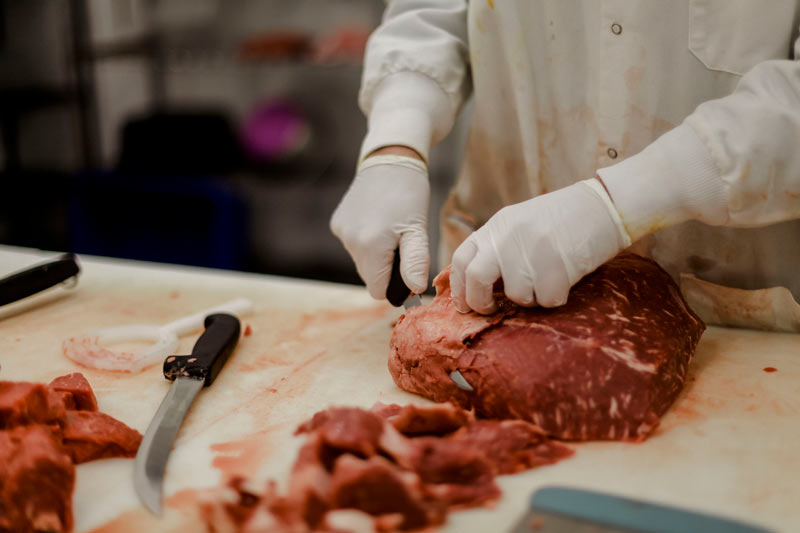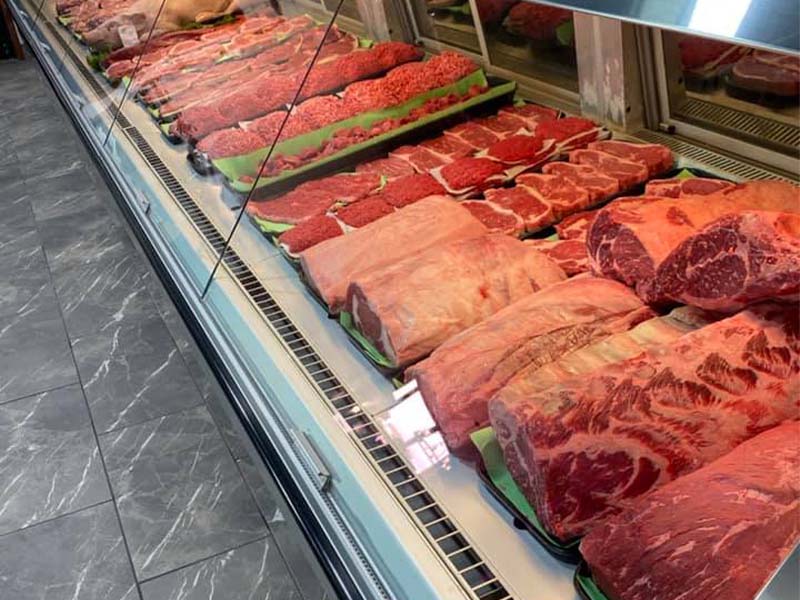Discover the Art of the Butcher's Cut in a Modern Meat Market
In the ever-evolving landscape of modern-day meat markets, the butcher's cut has transcended its conventional roots, combining age-old workmanship with modern methods. Today's butchers are not just processors of meat; they are educated artisans who stress sustainability and moral sourcing. Their proficiency in picking and preparing cuts tailored to certain culinary needs supplies an unparalleled eating experience. Yet, what really establishes the modern butcher apart is their capacity to create a much deeper connection between consumers and the beginnings of their meat. Exactly how do these masters equilibrium tradition with innovation, and what implications does this have for the future of meat intake?
Evolution of Butchery Methods
The evolution of butchery techniques mirrors an abundant tapestry of technology and adaptation driven by innovations in modern technology, changes in customer need, and a much deeper understanding of meat scientific research. Historically, butchery was a craft passed down through generations, with methods developed over centuries to maximize return and flavor. Nevertheless, the commercial revolution introduced automation, changing conventional methods and enabling large-scale handling.
The mid-20th century saw butchery strategies additionally improved by scientific understandings right into muscular tissue biology and meat aging, enhancing both tenderness and preference. Innovations like vacuum cleaner packaging and refrigeration extended product shelf-life, enabling butchers to expand offerings and enhance quality assurance. This period additionally noted the rise of customized devices, such as band saws and meat slicers, which raised accuracy and performance in meat handling.

The 21st century has introduced digital innovation into the butchery world. Electronic systems currently assist in tracking animal provenance and optimizing cuts to satisfy details consumer choices. Furthermore, a renewal in artisanal butchery has actually emerged, blending conventional skills with modern expertise to cater to consumers seeking ethical and lasting meat alternatives. This development highlights a dynamic interaction between custom and development, meeting modern demands while preserving the craft's heritage.
Comprehending Meat Cuts
Understanding the intricacies of meat cuts is crucial for both butchers and consumers looking for quality and value. For butchers, specific cuts reflect ability and regard for the craft, guaranteeing marginal waste and optimum yield.

Recognizing muscle mass structure is vital; muscle mass used extra regularly by the animal tend to be harder and are best fit for sluggish cooking approaches, sites while less-used muscles, like those found in the loin, are a lot more tender and suitable for grilling or roasting. Familiarity with these differences equips consumers to make enlightened options, enhancing their cooking endeavors.
Picking Top Quality Meat
Choosing the ideal meat entails more than just choosing an aesthetically appealing item from the display. The art of choosing high quality meat requires a critical eye and expertise of specific characteristics that indicate freshness and quality.
Secondly, consider the marbling, which describes the white flecks of fat within the muscle. Proper marbling is an essential sign of inflammation and taste, as it thaws during cooking, enhancing the meat's juiciness. Keep in mind, greater marbling typically associates with superior top quality cuts, such as USDA Prime.
Appearance is an additional critical element; meat ought to feel firm to the touch, not slimy or overly soft. Additionally, bear in mind the fragrance. Fresh meat must have a tidy, neutral odor, devoid of any type of sour or repulsive odors.
Combining Cuts With Cooking Techniques

On the other hand, harder cuts like brisket and chuck roast are rich in collagen, which breaks down right into jelly when cooked slowly. These cuts are suitable for braising or slow roasting, enabling the meat to soften with time and develop deep, complicated tastes. Cuts such as brief ribs and pork shoulder fare well with slow-cooking techniques, where prolonged cooking times change their durable appearances into delicious dishes.
Lamb shanks and oxtail, which require prolonged cooking to tenderize, are ideal prospects for stewing or slow-moving simmering. These approaches coax out abundant, passionate tastes while keeping dampness. By recognizing the distinct attributes of each cut, chefs and home chefs alike can elevate their cooking creations, making certain each recipe is both satisfying and remarkable.
The Butcher's Function Today
Navigating the evolving landscape of the modern-day meat market, the butcher's function today extends past mere prep work of cuts. Contemporary butchers are cooking artisans, instructors, and advocates for lasting methods. They bridge the void between the ranch and the fork by making certain honest sourcing, understanding pet husbandry, and prioritizing openness in the supply chain. This shift mirrors the growing customer demand for top published here quality over amount, where provenance and pet well-being are extremely important.
In enhancement to crafting accurate cuts, butchers currently engage directly with customers, using More Info cooking advice and customizing selections to fit specific needs and preferences. Their know-how in meat aging, marbling, and flavor accounts empowers consumers to make educated choices, enhancing their cooking experiences. This personalized service exhibits the butcher's advancing role as a relied on expert in the kitchen.
Additionally, butchers are crucial in minimizing waste, using entire pets to create diverse products such as sausages and stocks. This thorough approach not only appreciates the pet yet additionally aligns with contemporary sustainability goals. By doing this, the modern-day butcher embodies both tradition and development, adjusting to an ever-changing market while protecting the virtuosity and honesty of their craft.
Conclusion
The contemporary butcher's craft intricately weaves conventional techniques with modern-day technologies, highlighting sustainable practices and honest sourcing. Mastery in comprehending diverse meat cuts and high quality signs equips butchers to supply educated suggestions, lining up certain cuts with ideal cooking methods. This experience not just boosts cooking experiences yet likewise enhances the connection between customers and the beginnings of their food. By recognizing historical methods while accepting contemporary needs, the butcher's duty stays crucial in today's advanced meat market (bagley farms meat market edwardsville il).